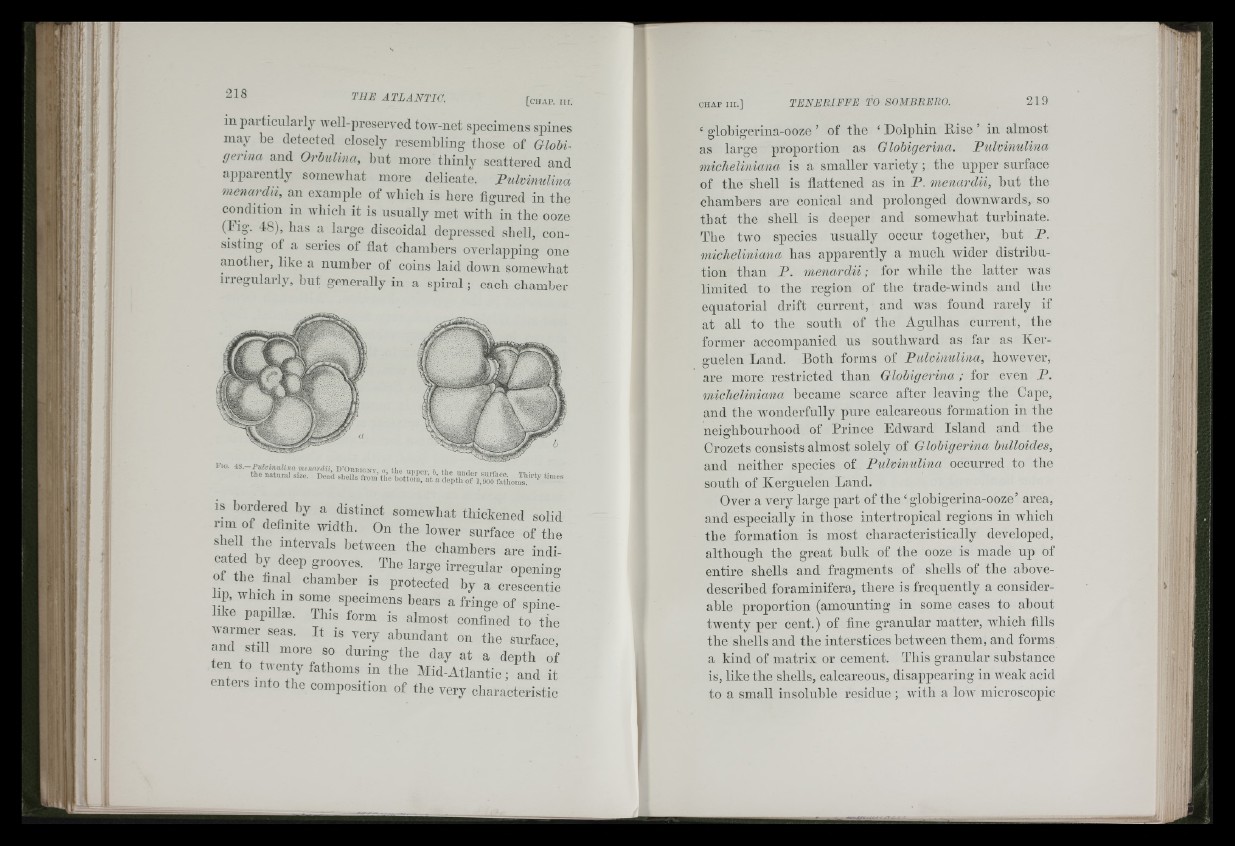
I
Íi-D
P I.
r
in particularly Avell-prescrved tow-uet specimens spines
may be detected closely resembling those of Globigerina
and Orhulina, but more thinly scattered and
apparently someivliat more delicate. Pulvimdina
menardii, an example of wliicli is here figured iu the
condition iu wliich it is usually met Avitli in the ooze
( lig . 18), has a large discoidal depressed shell, consisting
oi a series ot flat cliamliers overlapping one
another, like a number of coins laid down somewdiat
irregularly, but generally in a spiral; each chamber
IS boKlered by a distinct somewhat tliickened solid
I'lm of defimte width. On the lower surface of the
shell the intervals hetween the chambers are indicated
by deep grooves. The large irregular opening
of the hnal chamber is protected by a crescentic
p, AAliich m some specimens bears a fringe of spine-
like papillm. This form is almost confined fo the
warmer seas. It is very abundant on the surfaee,
and St, 1 more so during the day at a depth of
ten to twenty fathoms in the Mid-Atlantic; and it
enters info the composition of the very cliar.acteristie
‘ globigerina-ooze ’ of the ‘ Dolphin Bise ’ in almost
as large proportion as Glohigerina. Pidvinulina
micheliniana is a smaller variety; the upper surface
of the shell is flattened as in P. menardii, hut the
chambers are conical and prolonged downwards, so
that the shell is deeper and somewhat turbinate.
The two species usually occur together, hut P.
micheliniana has apparently a much wider distribution
than P. menardii-, for while the latter ivas
limited to the region of the trade-winds and the
equatorial drift current, and was found rarely if
at all to the south of the Agulhas current, the
former accompanied us southward as far as Kerguelen
Land. Both foi'ius of PitUinuUna, however,
are more restricted than Glohigerina ; for even P.
micheliniana hecaiue scarce after leaving the Cape,
and the Avonderfully pure calcareous formation in the
neia-hhourhood of Prince Edward Island and the
Crozets consists almost solely of Glohigerina bulloides,
and neither species of Pulvimdina occurred to the
south of Kerguelen Land.
Over a very large part of the ‘globigerina-ooze’ area,
aud especially iu tbose intertropical regions iu Avhich
the formation is most cliaracteristically developed,
although the great bulk of the ooze is made up of
entire shells and fragments of shells of the above-
described foraminifera, there is frequently a considerable
proportion (amounting in some cases to ahout
tAventy per cent.) of fine granular matter, AAdiich fills
the shells and the interstices hetween them, aud forms
a kind of matrix or cement. This granular substance
is, like the shells, calcareous, disappearing in Aveak acid
to a small insoluble residue ; Avith a I o a v microscopic
Í:
iff
I
Ik,:-
J